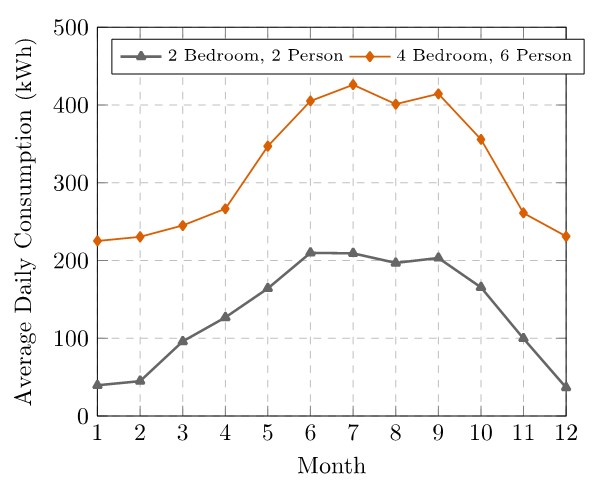Smart Grid Status in Hot Arid Climates – Drivers, Challenges, and Lessons Learned from Qatar
By I Safak Bayram
Despite a decade-long global research and development efforts on smart grids, a unique set of challenges still remain in the countries like Qatar where smart grid implementations are shaped by its hot arid climate, socio-economic norms, and the limitations of the current enabling technologies. This article summarizes the smart grid activities conducted for more than five years by various Qatari stakeholders to develop, test, and demonstrate different smart grid components.
Smart Grid Drivers in Qatar
The primary focus of smart grid technologies in the State of Qatar is to exploit solar energy resources, reduce carbon emissions and hydrocarbon usage, meet growing energy demand, and diversify economic activities through development of disruptive smart grid technologies such as electric vehicles (EVs) and renewables. Many of the smart grid activities are supported by Qatar National Plan 2030 and dedication to host a carbon-neutral FIFA World Cup Tournament in 2022. Rest of the article provides a detailed overview of challenges, opportunities, and lessons learnt from different smart grid applications, testing and demonstration studies.
Solar Energy Integration
Qatar and the Middle East North Africa (MENA) region enjoy year-long high solar irradiance (2048 kWh/m2/year [1]), paving the way to adopt solar resources. In line with the country’s solar energy generation profile, 800 MW utility scale solar farm composed of bifacial photovoltaic panels has been commissioned and expected to be operational by 2022 with a world record low of 1.567 US Cents per kWh with a 25-year power purchasing agreement [2]. However, one of the major issues is related to the frequent dust-storms and airborne particle concentration on solar surfaces that significantly reduce solar conversion efficiency (depicted in Figure 1). Researchers at Qatar Foundation conducted a-four-year-long measurement and testing of various PV modules study and concluded that on average power loss is 14% per month if the modules are cleaned bi-monthly [3]. To that end, low-cost cleaning of PV modules remains as a big challenge to enjoy economic and environmental benefits of renewables. Moreover, current PV technologies roughly lose 0.5% of efficiency per every degree above 25 degrees Celsius. Hence, sizable amount of conversion capability is lost during the summer months when ambient temperature reaches 45-50 degrees Celsius.

Figure 1: Dust accumulation on PV Panels in Qatar Solar Test Facility
Electricity Usage and Demand-Response (DR)
Over the last few years, local utility company Kahramaa, in collaboration with Siemens, has been expanding advanced metering infrastructure (AMI) to cover all electricity customers by the end of 2020 [4]. The primary motivation for AMI is to automate meter readings, while dynamic or time-based pricing schemes are not in the government’s agenda. Due to lack of publicly available datasets, several research efforts were conducted to reveal electricity consumption patterns and it was concluded that Qatar has unique consumption profiles [1]. First, due to heavily subsidized electricity tariffs, high disposable income, and excessive need for air conditioning (AC), there are no clear peaks during the day. Second, electricity consumption is highly correlated to outdoor temperatures and AC load represents nearly 37% of the entire consumption. Third, there are no significant differences between weekday and weekend profiles [1]. Moreover, in another study [5], smart energy monitors were used to create year-long consumption patterns. It was shown that customers who do not pay electricity bill consume more electricity than the ones who are not 100% subsidized. As shown in Figure 2, daily electricity consumption is significantly higher than average consumption levels in most developed nations. Considering these findings, it was shown that DR programs focusing on control of AC units and water heaters have significant potential to curb consumption levels, especially during peak periods [3]. Moreover, in the presence of solar rooftop systems, there is limited room for net-metering and peer-to-peer energy trading applications due to high electricity usage.

Figure 2 Average Daily Electricity Consumption of Entirely Subsidized Houses in Qatar [5].
Electric Vehicles in Qatar
Qatar has shown interest to electrify its transportation network by aiming to replace 10% of its fleet with EVs by 2025. Since 2019, several 50 kW Chademo fast chargers were deployed and the government aims to expand the charging network to 500 fast chargers [6]. On the other hand, there are three significant barriers in front of EV adoption. First, due to lack of incentives and tax-free purchase of internal combustion engine vehicles (ICEV), EVs cost significantly more than ICEVs. Second, EV batteries are not designed to operate under harsh desert environment. High ambient temperatures and dust combined with fast-charging of vehicles reduce battery lifetime and threaten the economic viability of EVs. Third, majority of the residents are expats who stay a few years in the country, hence, customer acceptance is expected to be limited. Therefore, electrification of the public fleet such as taxis, buses, and government vehicles has become the primary target for the next couple of years.
The Good, the Bad, and the Ugly
In a nutshell, the smart grid experience in Qatar can be summarized as follows. The good - abundance of solar resource and 340+ sunny days per year hold a promise to curb the carbon-intensity. The bad – there is a need to reconsider energy subsidy policies and increase public awareness in responsible electricity consumption. The ugly – extreme ambient temperatures combined with dust and aerosols significantly reduces solar generation and power electronics performance, therefore, new methods and technologies needed to unlock potential benefits.
References:
- Bayram, I. S., Saffouri, F., & Koc, M. (2018). Generation, analysis, and applications of high resolution electricity load profiles in Qatar. Journal of Cleaner Production, 183, 527-543
- https://www.pv-magazine.com/2020/01/23/qatars-800-mw-pv-tender-saw-world-record-final-price-0-01567-kwh/
- https://www.qscience.com/content/papers/10.5339/qfarc.2018.EEPD1018
- https://www.km.qa/MediaCenter/Pages/NewsDetails.aspx?ItemID=349
- Alrawi, O., Bayram, I. S., Al-Ghamdi, S. G., & Koc, M. (2019). High-resolution household load profiling and evaluation of rooftop pv systems in selected houses in Qatar. Energies
- https://www.km.qa/Business/Pages/TenderDetails.aspx?ItemId=1318
This article edited by Pardis Khayyer and Mehrdad Rostami
For a downloadable copy of July 2020 eNewsletter which includes this article, please visit the IEEE Smart Grid Resource Center.

To have the Bulletin delivered monthly to your inbox, join the IEEE Smart Grid Community.
Past Issues
To view archived articles, and issues, which deliver rich insight into the forces shaping the future of the smart grid. Older Bulletins (formerly eNewsletter) can be found here. To download full issues, visit the publications section of the IEEE Smart Grid Resource Center.




